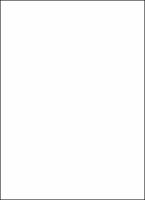Please use this identifier to cite or link to this item:
https://hdl.handle.net/20.500.12202/2640| Title: | The composition and structure of Mishnah "Sotah" |
| Authors: | Ebner, David Yechiel |
| Keywords: | Classical literature. |
| Issue Date: | 1980 |
| Publisher: | ProQuest Dissertations & Theses |
| Citation: | Ebner, Y. D. (1980). The composition and structure of Mishnah "Sotah" (Publication No. 303080578) [Doctoral dissertation, Yeshiva University]. ===Source: Dissertation Abstracts International, Volume: 41-04, Section: A, page: 1577. |
| Abstract: | Statement of Thesis. Mishnah represents an amalgamation of literary sources joined together in a logical fashion by its editor. A grasp of its literary structure will aid in the clarification of the text and, concomittantly, serve to enrich our understanding of the editorial process itself.¶ The traditional theory of Mishnah structure and composition views the Mishnah as a seamless whole in which the editor sought to provide new information in each pericope. The fruits of modern research suggest, however, that the editor sought to remain faithful to his sources even at the expense of some clarity of meaning and logic of sequence.¶ This work analyzes a body of Mishnaic material dealing with the ordeal to which a suspected adulteress could be subjected which is contained in Tractate Sotah, Chapters I-VI. It attempts to identify those literary phenomena in Mishnah which point to the nature of the editorial process. Any study of Mishnah necessarily involves an analysis of parallel Tannaitic literature and its relationship to Mishnaic material. Particularly important is the identification of the nature of the relationship of Tosefta to Mishnah.¶ Procedures Followed. The history of Mishnaic text can be fathomed only by a study focusing both on the present context of material in Mishnah and its relationship with proximate material in Mishnah and its relationship with proximate material as well as its context and formulation in other sources. Thus, a study of all parallel literature in the Talmudim, Midrashe Halaka and Tosefta was conducted in which the question of literary structure was paramount. In addition, a careful study of topical material not included in Mishnah was conducted in order to better gauge the principles by which the editor selected material for inclusion in Mishnah.¶ This method made use of the problems raised by the traditional commentaries. However, most of their solutions of Mishnah's problems are based on a harmonistic conceptions of Mishnah composition. Nonetheless, the problems often prove to be the keys to particular facts of Mishnah's literary history.¶ Conclusions. The pericopae analyzed bear out the thesis that the Mishnah editor attempted to construct a logically ordered presentation while at the same time preserving the literary structure of his sources. This axiom serves to elucidate the basic sense of much difficult material and reinforces the hypothesis that the Mishnah was never intended as a strictly legal code. Tosefta order differs from that of Mishnah but this should not be considered proof that Tosefta relates to a different Mishnah composition. |
| URI: | https://ezproxy.yu.edu/login?url=http://gateway.proquest.com/openurl?url_ver=Z39.88-2004&rft_val_fmt=info:ofi/fmt:kev:mtx:dissertation&res_dat=xri:pqm&rft_dat=xri:pqdiss:8021233 https://hdl.handle.net/20.500.12202/2640 |
| ISBN: | 9798641492360 |
| Appears in Collections: | Bernard Revel Graduate School of Jewish Studies: Doctoral Dissertations |
Files in This Item:
| File | Description | Size | Format | |
|---|---|---|---|---|
| Ebner PQ OA 1980 THE_COMPOSITION_AND_STRUCTURE ABBYY_.pdf | 8.98 MB | Adobe PDF |  View/Open |
Items in DSpace are protected by copyright, with all rights reserved, unless otherwise indicated.
